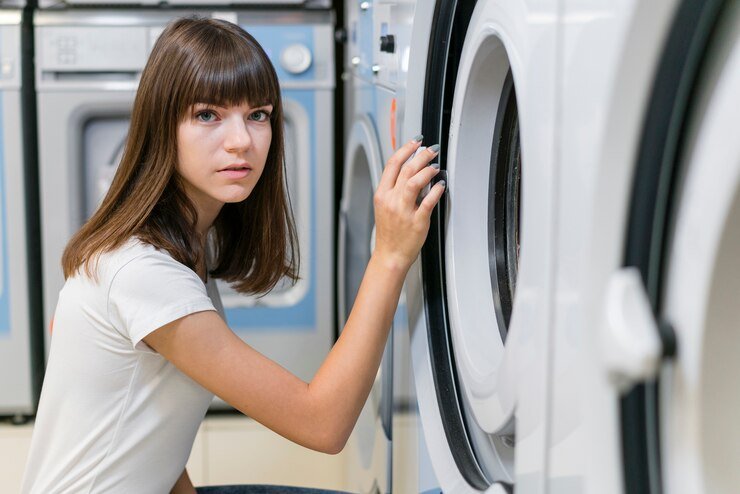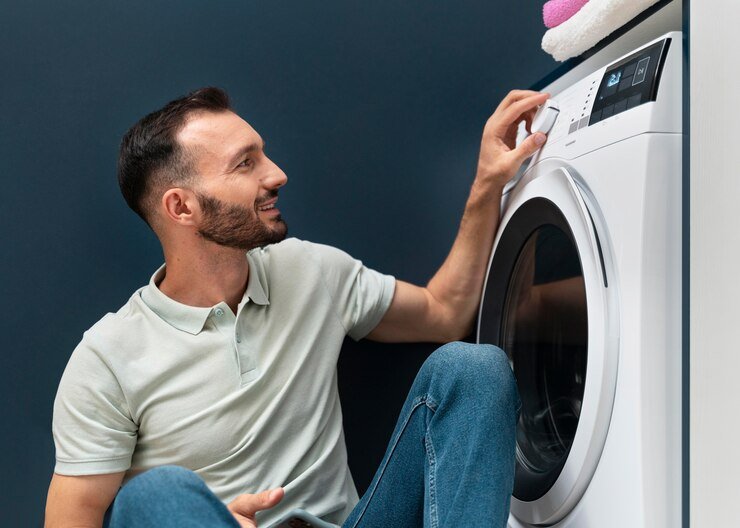Introduction
Are you the proud owner of a Kenmore Dryer Model 110.62812990? If so, you’re in the right place. This blog post is designed to help you understand your dryer inside and out, troubleshoot common issues, maintain it for longevity, and even explore some exciting upgrades and accessories. Whether you’re a new owner or a long-time user, this guide will provide valuable insights to ensure your dryer operates efficiently.
Kenmore has long been a trusted brand in household appliances, and the Model 110.62812990 is no exception. It’s known for its durability, efficiency, and user-friendly features. But like any appliance, it requires a bit of know-how to keep it running smoothly. By the end of this post, you’ll be equipped with all the information you need to make the most of your Kenmore dryer.
Understanding Your Dryer
Key Components of the Kenmore Dryer Model 110.62812990
Before we dive into troubleshooting and maintenance tips, it’s essential to understand the key components of your dryer and their functions. This knowledge will make it easier to identify problems and perform routine maintenance.
First, let’s talk about the drum. The drum is where you place your clothes, and it rotates to tumble them as hot air flows through. This tumbling action, combined with the heat, helps dry your clothes effectively. The drum is usually made of stainless steel or coated with a durable finish to resist rust and wear over time.
Next up is the heating element. This component generates the heat needed to dry your clothes. It’s typically located at the back of the dryer and can be either electric or gas-powered, depending on your dryer’s design. The heating element works in conjunction with a thermostat to maintain the right temperature throughout the drying cycle.
Lastly, we have the lint trap. This small but crucial component catches lint and debris from your clothes, preventing them from clogging the exhaust vent. Regularly cleaning the lint trap is vital for maintaining good airflow and preventing potential fire hazards.
How Each Component Works Together
Now that you know the primary components, let’s discuss how they work together to dry your clothes. When you start a drying cycle, the motor powers the drum’s rotation while the heating element warms up the air. This hot air is then blown into the drum, where it circulates through your clothes, evaporating moisture.
The moisture-laden air is then expelled through the exhaust vent, but not before passing through the lint trap. The lint trap captures any lint and debris, ensuring they don’t clog the vent system. This continuous airflow, combined with the tumbling action, effectively dries your clothes.
The Importance of Proper Component Function
Each component of your dryer plays a critical role in ensuring optimal performance. If one part malfunctions, it can affect the entire drying process. For example, a faulty heating element won’t produce enough heat, leading to longer drying times. Similarly, a clogged lint trap can restrict airflow, causing your dryer to overheat and potentially pose a fire hazard.
Understanding these components and their functions will help you diagnose issues more accurately and maintain your dryer for years to come.
Common Issues and Troubleshooting
Problem 1: The Dryer Won’t Start
One of the most common issues users face is a dryer that won’t start. This problem can be frustrating, but there are several potential causes and solutions to consider.
First, check the power supply. Ensure the dryer is plugged in securely and that the circuit breaker hasn’t tripped. Sometimes, a simple reset of the breaker can solve the problem. If the power supply is intact, the issue might be with the door switch. The dryer won’t start if the door isn’t closed properly or if the switch is faulty.
Another possible cause is a blown thermal fuse. The thermal fuse is a safety feature that prevents the dryer from overheating. If it blows, the dryer won’t start. Replacing the thermal fuse is a relatively simple fix that can restore functionality.
Problem 2: The Dryer Isn’t Heating
If your dryer runs but doesn’t produce heat, the heating element or thermostat could be the culprit. Start by checking the heating element for any visible damage or burns. If it’s damaged, replacing it should solve the problem. Additionally, ensure the thermostat is functioning correctly, as it regulates the dryer’s temperature.
Another potential cause is a clogged vent system. Restricted airflow can prevent the dryer from heating up adequately. Inspect the vent hose and exhaust ducts for any blockages and clean them thoroughly.
Problem 3: The Dryer Is Noisy
Unusual noises coming from your dryer can indicate various issues. A common cause is worn-out drum rollers or bearings. Over time, these components can wear down, leading to squeaking or rumbling sounds. Replacing the drum rollers or bearings should eliminate the noise.
Another potential cause is loose or damaged belts. The belts connect the motor to the drum and help with rotation. If they become loose or frayed, it can result in thumping or knocking sounds. Inspect the belts and replace them if necessary.
Maintenance Guide
Regular Cleaning
Maintaining your Kenmore dryer involves regular cleaning to ensure optimal performance and longevity. Start by cleaning the lint trap after every load. This simple step improves airflow and reduces the risk of fire hazards. Additionally, vacuum the area around the lint trap to remove any trapped debris.
Periodically, clean the exhaust vent and ductwork to prevent blockages. Disconnect the vent hose from the dryer and use a brush or vacuum attachment to remove lint buildup. This maintenance task enhances airflow and improves drying efficiency.

Inspecting and Replacing Parts
Regular inspection of critical components can help identify potential issues before they escalate. Check the drum rollers, belts, and bearings for signs of wear and tear. If you notice any damage, replace the affected parts promptly to avoid further complications.
Inspect the heating element and thermostat periodically to ensure they are functioning correctly. If you detect any issues, consider seeking professional assistance for repairs or replacements.
Lubricating Moving Parts
Lubricating moving parts, such as the drum rollers and bearings, can reduce friction and extend their lifespan. Use a high-quality lubricant designed for dryer components and apply it as needed. Be sure to follow the manufacturer’s recommendations for lubrication frequency.
Upgrading and Accessorizing
Available Upgrades
Enhancing the functionality of your Kenmore dryer is possible with a range of available upgrades. One popular upgrade is installing a moisture sensor. This sensor detects the moisture level in your clothes and adjusts the drying time accordingly. It helps prevent over-drying and saves energy.
Another upgrade option is a steam feature. Some dryers offer steam cycles that reduce wrinkles and refresh clothes. If your dryer doesn’t have this feature, consider exploring retrofit kits that can add steam functionality.
Essential Accessories
Accessorizing your dryer can make laundry tasks more convenient and efficient. One essential accessory is a drying rack. It provides a space to dry delicate items or shoes without using the dryer drum. Simply place the rack inside the drum and lay the items flat for gentle drying.
Another useful accessory is a vent cleaning kit. These kits typically include brushes and tools to help you clean the vent system thoroughly. Regular vent maintenance ensures optimal airflow and prevents potential fire hazards.
Personalizing Your Dryer Space
Personalizing your laundry space can enhance the overall experience. Consider adding storage solutions, such as shelves or cabinets, to keep laundry essentials organized. A folding station or countertop can provide a dedicated space for folding clothes, making the process more efficient.
Additionally, decorative elements like wall art or plants can create a pleasant and inviting atmosphere in your laundry room.
Conclusion
In conclusion, the Kenmore Dryer Model 110.62812990 is a reliable and efficient appliance that can make your laundry tasks a breeze. By understanding its components, troubleshooting common issues, and performing regular maintenance, you can ensure its optimal performance and longevity.


